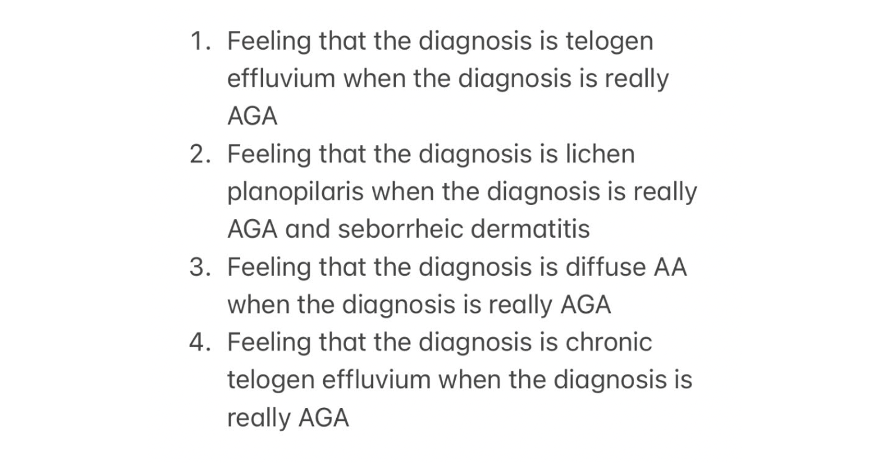Diagnosing Hair Loss: Do you try too hard? Can you give up on the diagnosis when things don't align?
Real Diagnostic Expertise Comes with Understanding What Features are not Typically seen in a Given Diagnosis and How Various Diagnoses Compare.
Do you try really really hard sometimes to make a diagnosis of hair loss “fit” with a very specific diagnosis that you have in your mind - and choose to ignore much of the evidence that suggests that this is not truly the diagnosis the patient actually has.
Well, it’s easy to get locked on a diagnosis. Patients do it. Practitioners do it. We feel committed to a certain diagnosis- and very little can change our mind.
There are many similarities between apples and bananas. They are found in the same section of the grocery store, they have somewhat similar nutritional value, they are often used as a snack …and both taste sweet. It’s by focusing on differences and what features of apples are not seen in a banana that the brain comes to realize fully that an apple is different.
It’s kind of like convincing yourself that an apple is a banana. After all, it’s a fruit, it’s found in the same section of the grocery store, it has somewhat similar nutritional value, it’s often used as a snack …and tastes sweet. How much more similar could they be?
Well, an apple is not a banana of course - just like that case you think is telogen effluvium is not always telogen effluvium or that case you think is lichen planopilaris or frontal fibrosing alopecia is not always scarring alopecia at all or that case of androgenetic alopecia you feel your patient had is not AGA at all.
The four most common errors in diagnosis that many try hard to “fit” are shown in the accompanying photos
Letting Go of the Incorrect Diagnosis When it’s time to Let Go
Many people can “let go” of their incorrect diagnosis - but some can not. For some, the commitment to the diagnosis is so profound that there is no letting go.
For these individuals, there is absolutely no way to convince them that an apple is an apple. The fruit they see is a banana and will be labelled as that.
The first stage of developing knowledge in hair loss is to understand the features of various diseases. What are the features of AGA? What are the features of telogen effluvium?
The second stage of developing real expertise is to understand how the disease in question differs from other diseases and what features are not typical of that disease.
It’s only when we are willing to spend the time and energy to learn how an apple is different from a banana and what features of apples are not found in bananas that we come to confidently declare that an apple is not a banana. But if we remain committed to only a rudimentary knowledge of apples and a rudimentary knowledge of bananas , we can continue this non sensical thinking in perpetuity.
This article was written by Dr. Jeff Donovan, a Canadian and US board certified dermatologist specializing exclusively in hair loss.


